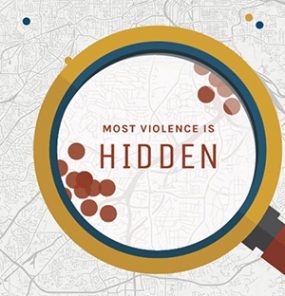Hospital Guidance
- Who Collects The Information?
- What Specific Information Is Collected?
- When Is The Information Collected?
- Where In The Hospital Is The Information Collected?
- How Is the Information Collected?
- How Often Does Anonymous Violence Information Ge Shared?
- Challenges Of Using Electronic Medical Records (EMRS) To Collect And Share Data
- Training Options For Hospital Staff
Who collects the information?
Nurses may be in the best position to collect violence-related injury information when asking general screening questions during intake or registration. If the registration process is completed by a non-nurse, this staff member could also be considered to be the primary point of contact for data collection.
What specific information is collected?
Hospital and healthcare personnel collect violence-related injury information* that can be used to track local violence trends and develop prevention programs. This information includes:
- When the injury occurred (date and time)
- Where the injury took place (exact location: business name and/or street address)
- How the injury happened and/or weapon used (e.g. hit, stabbed with a knife)
When is the information collected?
Violence-related injury information may be collected at any point during the patient visit. For example, the U.K. Cardiff Model and U.S. pilot sites collected data during registration or initial triage to prevent any disruption in the workflow.
Where in the hospital is the information collected?
It is recommended that data be collected in the emergency department (ED), including the trauma bay if the hospital is a trauma center. If the hospital has a separate, on-site urgent care clinic and/or trauma unit, these intake points may also be used to collect injury information.
How is the information collected?
The violence-related injury information can be integrated into the existing electronic medical record (EMR) or collected via separate data forms and databases. Integration of violence-related injury information into the EMR permits the most efficient data collection and data extraction process.

How often does anonymous violence information get shared?
Violence information can be shared on any mutually agreeable timeframe within the community safety partnership (CSP). Past partnerships have found monthly sharing to be useful, although more frequent sharing could occur.
Challenges of using electronic medical records (EMRS) to collect and share data
Protection of private patient information is a major consideration in the implementation of the Cardiff Model. The Cardiff Model shares information that captures an injury location, date and time, and the weapon used. The model uses real-time hospital and law enforcement data to help communities identify and map areas where violence frequently occurs such as in public spaces like street corners or bus stops and businesses.
In some hospitals or healthcare facilities, using the EMR or other forms of a patient medical record to collect data that will be shared outside of the institution may raise privacy concerns. These concerns are addressed in the “Legal, Technical, and Financial Considerations” document.
- Building relationships
- Establish a violence prevention partnership with local law enforcement, a public health agency, and other applicable partners
- Determine the most useful injury information for the local partnership to collect, with a focus on keeping information collection brief. It is important to weigh the advantages of including the information that stakeholders might like to have against the consequences of making the screening process too long. It is best to focus on the information that is most critical.
- Gain hospital leadership (e.g. management and nursing) and support
- Collection and sharing data
- Identify the personnel or departments with the capacity to integrate Cardiff Model fields in the health record or EMR
- Establish procedures for collecting injury information
- Train nurses and other staff to collect injury information
- Determine strategies to monitor and improve data quality
- Find out what laws and regulations must be considered in order to collect and share violence information outside of the hospital or healthcare system
- Establish procedures for extracting and sharing injury information
- Identify hospital information technology/data quality team to set up a data sharing process
- If necessary, develop and sign a shared data use agreement to protect the information that is shared
- Building a community safety partnership
- Work with law enforcement and public health partners to establish a broader community board to review the maps on violent injury
- Help to develop a culture of decision-making based on real-time data
- Assist in implementing multi-agency prevention programs and initiatives at locations identified in the mapping of the data
Training options for hospital staff
Training can be delivered in many different formats. Below are some of the advantages and challenges with different training formats. The U.S. Cardiff Model pilot sites tested multiple
methods of training; in-person training is most helpful for rapid scale-up and close adherence to the model when starting a new Cardiff Model program.
| Format | Delivery Method | Advantages | Challenges |
|---|---|---|---|
| Self-study | E-mail, online, paper | Easy and does not require significant personnel time or effort, can be integrated into standard staff training and education platforms | Difficult to evaluate the extent and efficacy of training process |
| Staff In-service | Large group instruction | Face-to-face, provides the opportunity to ask questions | Requires on-site trainer until all staff have completed training; in-services may be infrequent and slow the initiation of project activities; training may not reach new staff |
| Regular staff or shift change meeting | Small group instruction | Face-to-face, provides the opportunity to ask questions | Requires trainer or project champion on shift until everyone is trained and in continuation to educate new staff |
| One-on-one training | Individual | Face-to-face, opportunity to ask questions, able to assess knowledge | Requires on-site trainer; resource intensive |